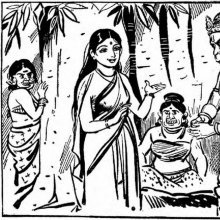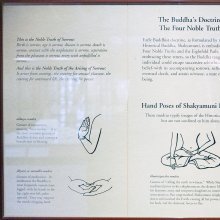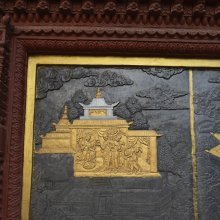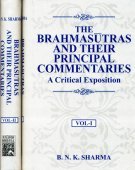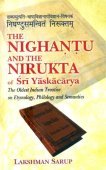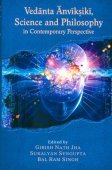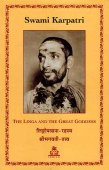Speech: 5 definitions
Introduction:
Speech means something in Buddhism, Pali, Hinduism, Sanskrit, Hindi. If you want to know the exact meaning, history, etymology or English translation of this term then check out the descriptions on this page. Add your comment or reference to a book if you want to contribute to this summary article.
Images (photo gallery)
In Hinduism
Natyashastra (theatrics and dramaturgy)
Source: Shodhganga: Elements of Art and Architecture in the Trtiyakhanda of the Visnudharmottarapurana (natya)Delivering Speech or Dialogues (in Indian dramas) is associated with Bhāratī-vṛtti: one of the denoted four kinds of Dramatic Styles (in Sanskrit: vṛtti), according to the Viṣṇudharmottarapurāṇa, an ancient Sanskrit text which (being encyclopedic in nature) deals with a variety of cultural topics such as arts, architecture, music, grammar and astronomy.—There are four kinds of vṛttis i.e., dramatic styles accepted in the Viṣṇudharmottarapurāṇa. The way or style of delivering speech or dialogues in a Drama is regarded as bhāratī-vṛtti. The Sāhityadarpaṇa also agrees on it.

Natyashastra (नाट्यशास्त्र, nāṭyaśāstra) refers to both the ancient Indian tradition (shastra) of performing arts, (natya—theatrics, drama, dance, music), as well as the name of a Sanskrit work dealing with these subjects. It also teaches the rules for composing Dramatic plays (nataka), construction and performance of Theater, and Poetic works (kavya).
Yoga (school of philosophy)
Source: ORA: Amanaska (king of all yogas): A Critical Edition and Annotated Translation by Jason Birch(That which is) Speech is denoted by the Sanskrit term Vāc (as opposed to Avāc—‘speechless’), according to the Bṛhadāraṇyikopaniṣat 3.8.6.—Accordingly, while describing the absolute nature of Brahma: “Gārgi said, ‘Yājñavalkya, that which is above the sky, below the earth, between the two and called [past, present and future], is stitched and cross-stitched in what?’ Yājñavalkya said, ‘Gārgi, the Brahmins call that very [thing] the imperishable one. [e.g., It is speechless (avāc) [...]’”.

Yoga is originally considered a branch of Hindu philosophy (astika), but both ancient and modern Yoga combine the physical, mental and spiritual. Yoga teaches various physical techniques also known as āsanas (postures), used for various purposes (eg., meditation, contemplation, relaxation).
In Buddhism
Tibetan Buddhism (Vajrayana or tantric Buddhism)
Source: ORA: Amanaska (king of all yogas): (Tibetan Buddhism)(The power of) Speech can be denoted by the Sanskrit term Vāca, according to verse 14.24bd-27 of the Laghuśaṃvara, an ancient Buddhist Yoginī Tantra.—Accordingly, [while describing the Siddhi of speech]: “The Sādhaka [who has] the Siddhi of speech (vācā) can certainly attract a king or queen by [merely] thinking [it]. He quickly controls gods, demons and men. When angry, he can kill with his speech (vācā) and drive away his adversary. The practitioner can thus effect a curse with his speech. And he can stop a river, a cart, a machine [like a water-wheel,] the ocean, elephants and horses, clouds, a man or bird merely by means of his speech (vācā-mātra). He achieves everything which he desires by his speech”.

Tibetan Buddhism includes schools such as Nyingma, Kadampa, Kagyu and Gelug. Their primary canon of literature is divided in two broad categories: The Kangyur, which consists of Buddha’s words, and the Tengyur, which includes commentaries from various sources. Esotericism and tantra techniques (vajrayāna) are collected indepently.
General definition (in Buddhism)
Source: A Buddhist Library: In This Very LifeSpeech (i.e, listening to Dhamma talks) refers to one of the Seven types of Suitability, which should be met in order to create an environment that is supportive of meditation practice.—The third suitability is that of speech. During a retreat, suitable speech is of a very limited kind and quantity. The commentaries define it as listening to Dhamma talks. We can add participating in Dhamma discussions with the teacher—that is, interviews. It is essential at times to engage in discussions of the practice, especially when one is confused or unsure about how to proceed.
Languages of India and abroad
Hindi dictionary
Source: DDSA: A practical Hindi-English dictionarySpeech in Hindi refers in English to:—(nf) a speech..—speech (स्पीच) is alternatively transliterated as Spīca.
...
See also (Relevant definitions)
Starts with: Speechless.
Ends with: Control in speech, Divine speech, Eloquent speech, Faultering speech, Low Speech, Samma Vaca.
Full-text (+4400): Vaca, Bhashana, Pralapa, Vaikhari, Vani, Vac, Subhashita, Vakrokti, Vagvilasa, Sarasvati, Vacika, Vacana, Bhasha, Abhilapa, Bharati, Vagdanda, Ukti, Bhasita, Gir, Vanmaya.
Relevant text
Search found 424 books and stories containing Speech; (plurals include: Speeches). You can also click to the full overview containing English textual excerpts. Below are direct links for the most relevant articles:
Mahabharata (English) (by Kisari Mohan Ganguli)
Section LXXXIV < [Rajadharmanusasana Parva]
Section LXXIX < [Sambhava Parva]
Section CCC < [Mokshadharma Parva]
Churchill as a Writer af Prose < [April 1954]
Dr. Sarvepalli Radhakrishnan < [July 1967]
Dr. Sarvepalli Radhakrishnan < [July 1967]
Mudrarakshasa (literary study) (by Antara Chakravarty)
3.5. Use of Rūpaka-alaṃkāra < [Chapter 3 - Use of Alaṃkāras in Mudrārākṣasa]
4.3. Ārabhaṭī-vṛtti < [Chapter 5 - Adoption of Style and Language in Mudrārākṣasa]
6.5.1. Minor Male characters of Mudrārākṣasa < [Chapter 6 - Other Literary Estimates of Mudrārākṣasa]
Rig Veda (translation and commentary) (by H. H. Wilson)
Puppetry in Assam (by Gitali Saikia)
Techniques and manner of Presentation of puppetry < [Chapter 4]
Puppet tradition prevalent in other Countries of World < [Chapter 2]
Costume of puppets of Assam < [Chapter 4]
The Chaldean account of Genesis (by George Smith)
Related products
